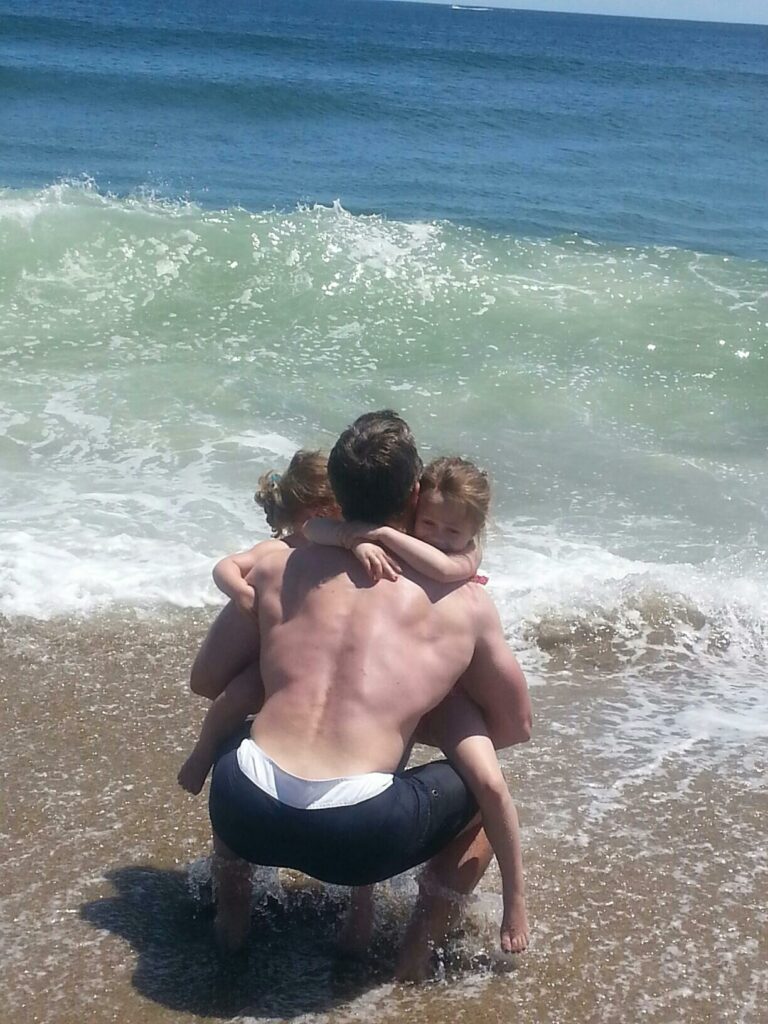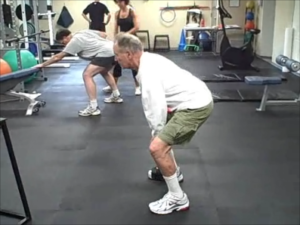It can be very discouraging when dealing with back pain to see an MRI report that reads “Degenerative Disc Disease”. At 17 I was diagnosed with degenerative disc disease of cervical spine and of the lumbar spine at 26.
Many are led to believe that a Degenerative Disc Disease diagnosis guarantees a future of limited activity and increasing pain as they age. But is this true?
Fortunately, based on the evidence there is good reason for those with “disc degeneration” to be optimistic.

Is “Discs Degeneration” Really A Disease?
Many specialists in spine anatomy question whether it is appropriate to label findings of disc changes found on MRI as a degenerative disease. This is mostly due to the low correlation between function and disc damage, as well as the high prevalence of “disc degenerative” findings in asymptomatic individuals throughout the life span. 1 Furthermore, others have postulated that the disc changes are actually adaptive responses to chronic load, as opposed to a disease2, similar to how a callus forms on a laborer’s hands.
Can Revealing MRI Findings to Patients Actually Be Harmful?
From the PCP to the PT to the spinal surgeon, clinicians should help patients understand the true meaning of spine imaging findings. It is vital that we avoid pathologizing every finding revealed on an MRI and convey to our patients an accurate representation of what imaging findings may, or may not, indicate based on evidence.
Since the evidence indicates that MRI findings often do not correlate with functional changes or pain, we need to make sure our patients do not catastrophize such findings. This could wrongly lead them to believe that they have a “bad back” as opposed to a temporary irritation. This distinction is crucial because the wrong interpretation can result in decreased function, a high likelihood of pursuing unnecessary or harmful interventions, and significantly reduced activity and future health3. Incorrect patient interpretations of their imaging findings may even increase their pain and reduce their response to effective interventions like exercise. This is known as a nocebo effect, where negative expectations of prognosis will have a detrimental effect on their health.

Will Degenerative Disc Disease Lead To More Pain & Problems As You Age?
Recently, researchers reported on an investigation to determine whether those who were found to have “Degenerative Disc Disease” via MRI would go on to have more severe degeneration over time. They also examined function and pain levels.
Baseline data was collected when the subjects were 20 years old with severe low back pain, and the subjects were re-examined 30 years later.
The findings indicated that “degeneration” did progress to “severe degeneration” in 57% of the subjects with baseline degeneration compared to 11% of those who had “healthy discs” at baseline.
More importantly, there was no correlation between degeneration and pain or function. 2/3 of the group that had severe pain on baseline went on to have little to no pain 30 years later.4

What Does This Mean For People With “Degenerative Discs”?
This evidence gives clinicians confidence to properly educate patients to prevent a nocebo effect from MRI findings. We can be reassured that based on a growing body of evidence, the MRI findings do not accurately determine or predict pain or function. In fact, while many go on to show more “degenerative” findings as they age, most will see their pain go away or reduce. We can also appreciate that back pain is multifactorial and can’t be explained by a scan alone. We know that that there are different types of back pain, and an individualized plan matched to your type of back pain will work best5. Finally, the evidence suggests that exercise is the most well supported intervention for back pain and will also improve general health6.
This is the specialty of the clinicians at Orthopedics Plus Physical Therapy: identifying the unique type of back problems that patients have and then matching the treatment based on their findings, needs, and the evidence. In addition, the clinicians at OP can collaborate with the fitness professionals at Spectrum Fitness Consulting next door to provide a long term comprehensive fitness strategy to stay strong and healthy, as well as prevent injury. This is why patients and fellow clinicians trust us to solve their back pain.

Check out the case study below that highlights how we use this collaboration for a great patient outcome.
Case Study: From Severe Radicular Pain To Running 5ks & Fat Loss
Patient was a 56 y/o female who present to the clinic with extreme low back pain which also radiated to the posterior thigh. The onset of symptoms occurred a couple weeks prior to the initial exam, suddenly following an episode of moving heavy furniture in an awkward position. She had several prior episodes of LBP, but this was by far the most disabling. She reported extremely limited function, often causing her to be unable to stand upright, go to work, bend over to get dressed, walk more than 2 minutes, or exercise. She was particularly discouraged as a few weeks prior she had begun training for a 5 K race in attempts to get healthier and lose weight.
Initial findings:
- Range of motion: extreme pain and restriction, especially with flexion
- Neuro Exam: Decreased L4 dermatomal sensation and DTR. Myotomal Strength was unimpaired
- Positive prone instability and traction tests
- Pain Level: 7-9/10
Discharge findings/Results:
- Range of motion: full and pain-free
- Pain levels fluctuate between 0-2/10
- Neuro Exam: normal
- Returned to a comprehensive supervised exercise program at Spectrum. Able to perform all ADLs, return to work, lift >40lbs, and run a 3K. Several months later, she went on lose 35lbs of fat, gain 5 lbs of muscle, and run a 10K race pain free!
Patient testimonial:
“Before I came here, I was miserable. I was in constant pain. I could barely sit, walk, or stand. I was 30lbs overweight. When I met the OP/Spectrum team, I got optimism and support. Specialist before told me I was just going to have to get used to the pain. Now, my pain is almost gone. I’m in less pain and stronger than ever. I can lift weights, bike to and from work. I lost 35 lbs. Thank you to Mike and Andrew for teaching me how to heal. They have changed my life.”
-Laura M.
- Flynn, t. et al. JOSPT 2011.
- Bogduk, N Radiol Clin N Am 2012
- Fisher, ES. Et al. JAMA 1999.
- Simo et al. Spine May 2020
- Hebert JJ, et al. Sports Health 2011
- Foster, NE , et al The Lancet. 2018
